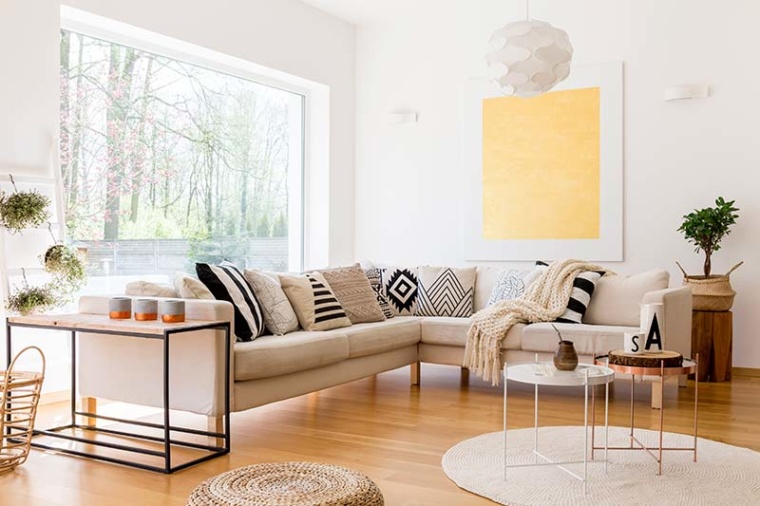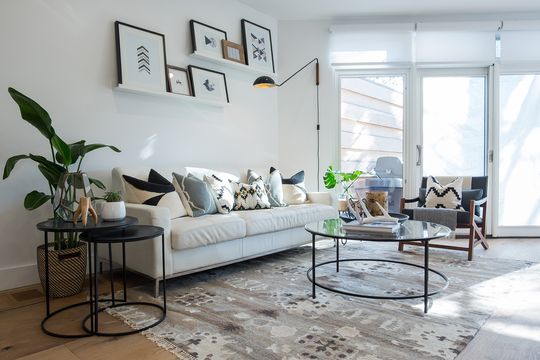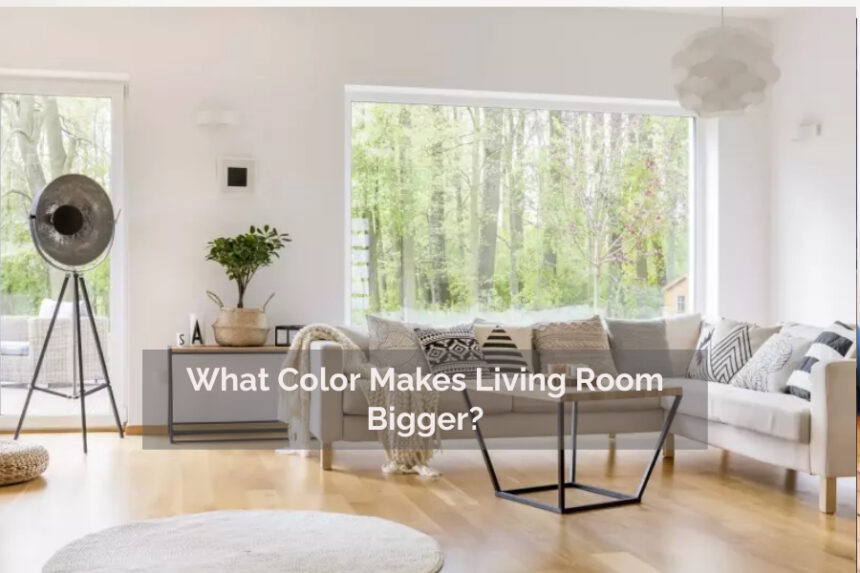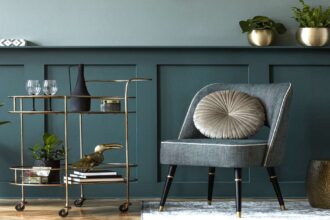Are you sick of feeling limited and uncomfortable in your small living room? A fresh coat of paint might be all that is needed to solve the problem. The wall colour in your living room has a significant impact on how spacious it appears. In this post, we’ll examine the transforming power of colour and walk you through the process of choosing the ideal shade to enlarge and warm up your living space.
Space Illusion via Colours For Living Room

Colour has the astonishing power to affect our perceptions, feelings, and even how big we think a room is. The right colour scheme may do wonders for evoking the impression of a larger living area.
1. Choose Light and Bright Shades For Living Room
The reflective qualities of light colours are well known for reflecting more light and generating an airy environment. Soft whites, pastel blues, and pale yellows may all instantly expand your living space and give it a more airy appearance. These colours not only reflect natural light but also offer a neutral stage for furnishings and accents, decluttering the room.
2. Magic in Monochrome For Living Room
The use of various tones of the same colour is referred to as a monochromatic colour scheme. This method gives your living space depth while preserving a consistent aesthetic. To do this, pick a light colour for the basis and then incorporate slightly deeper or lighter shades for accents and furniture. The nuances of difference between these
3. Be Cool and Calm and Use Blues and Greens For Living Room

Cool hues like blues and greens create a receding effect that makes the walls appear to be farther away and gives the impression that there is more space. Soft aqua, pale sage, or delicate turquoise can add a peaceful atmosphere while broadening the perception of your living room’s limits.
4. Variables for Neutrality For Living Room
Beige, taupe, and light grey are traditional options for opening up a space. These hues effortlessly create a clutter-free space and go well with many different design aesthetics. To give the room personality, think of accentuating neutral walls with colourful throw pillows, artwork, or a vivid area rug.
5. White Elegance For Living Room
White is the best colour for increasing space because it is frequently linked to simplicity and purity. It offers a blank slate that makes other design components stand out. While a living room made entirely of white can appear stylish and contemporary, you can add warmth by adding other textures, such as velvety fabrics, wooden furniture, and metallic accents.
Practical Painting Advice

Keep in mind these useful advice when implementing these colour schemes in your living room:
Sample Test
Before deciding on a colour, paint a small section of your wall and check out how it looks in various lighting throughout the day. Consider painting the ceiling and trim a little lighter than the walls to give the impression of height.
Mirrors and Lighting

Well-positioned mirrors can reflect both ambient and artificial lighting, enhancing the impression of space. Shadows that can make the space appear smaller are avoided by using adequate lighting, which includes floor and table lights.
Declutter
Keeping your living room organised and clutter-free is crucial for retaining the impression of space, regardless of the colour you choose.
Conclusion
In conclusion, choosing the ideal wall colour for your living room can have a big impact on how open and inviting the space feels. You can create a spacious ambiance that improves your living experience by choosing light and bright colours, embracing monochromatic designs, or experimenting with chilly tones. Keep in mind that colour has transforming potential in addition to its perceptual impact.
Imagine entering a living area that exudes a sense of openness and friendliness right away. This is the magic that the ideal colour scheme may produce. By using light and bright colours, you can collect and reflect light, giving the space a pleasant, airy glow that inevitably expands its limits. Your living area is transformed into an optimistic painting where light reflects off the walls and makes even the smallest spaces feel inviting.
Visual Impact
On the other side, monochromatic themes send your living space on a voyage of refinement and depth. It’s like a painter’s brushstroke, adding layers of intrigue that reveal themselves as you move about the space. A symphony of subtle contrasts emerges as your eyes go from one shade to another, demonstrating the power of a well-designed colour scheme. With this approach to design, your living space is transformed into the epitome of elegance, where each component has a place in perfect harmony. It’s like bringing fresh air into your home when you explore the world of cold tones like calm blues and soothing greens. These hues invite you to relax by engaging your senses beyond just their visual impact.
Are you prepared to revamp your living room? For a large selection of premium paints and advice from industry professionals to help you choose the ideal colour scheme for your area, go to Arteriorz. Just a few strokes can give your living space the size you’ve always wanted!
Related Blogs
What Are The 9 Interior Design Styles?
Cheap decorating ideas for living room walls
Family Room Decor Ideas
FAQ
How a living room feels vast can be greatly influenced by the colour of the walls. Lighter colours, such pastels and soft whites, reflect more light and provide the impression of space since they are airy. Cool hues like blues and greens create a receding effect that makes the walls appear to be farther away and gives the impression that there is more space.
Yes, compact living spaces often benefit the most from light and neutral colours. Whites, light greys, and delicate pastels are examples of colours that may open up a room and make it feel less cramped. Additionally, these hues serve as an adaptable backdrop for a range of interior design and furniture trends.
A monochromatic colour scheme uses various tones of the same colour all over the space. This design strategy keeps a consistent aesthetic while introducing depth and dimension. The slight colour changes add visual appeal without overpowering the senses and help the room feel expansive.





